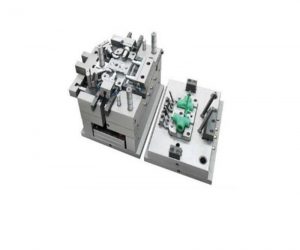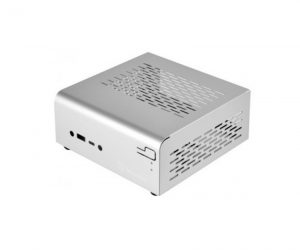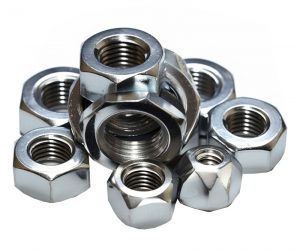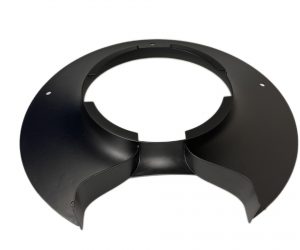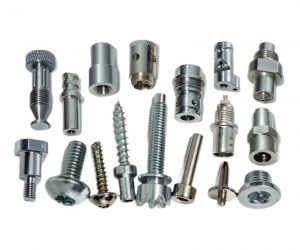Plastic Injection Molding is a widely used manufacturing process for producing high volumes of precise plastic parts. It involves melting plastic pellets and injecting the molten material into a mold cavity, where it solidifies into the desired shape. This process is used in various industries such as automotive, medical, consumer goods, and aerospace due to its efficiency, cost-effectiveness, and ability to produce complex designs.
Introduction to Plastic Injection Molding
Plastic injection molding is a versatile manufacturing technique that enables the mass production of plastic parts with consistent quality and intricate designs. It is widely utilized across industries to create components ranging from everyday consumer products to high-performance parts used in critical applications like medical devices and automotive components.
Plastic Injection Molding Process
2.1 Plastic Material Selection
The material selection is crucial to the injection molding process as it influences the part's performance and durability. The most common materials used in injection molding are thermoplastics, which can be repeatedly melted and solidified without degrading. Some popular thermoplastics include:
- Polyethylene (PE): Used for packaging and containers.
- Polypropylene (PP): Known for its chemical resistance, often used in automotive and medical products.
- Polystyrene (PS): Common in consumer products and packaging.
- Acrylonitrile Butadiene Styrene (ABS): Used in products that require strength and impact resistance (e.g., automotive parts, toys).
- Polyvinyl Chloride (PVC): Used in construction and medical industries.
Factors to consider during material selection include the product's desired properties (strength, flexibility, heat resistance), cost, environmental impact, and regulatory requirements.
2.2 Mold Design and Fabrication
The mold is the key element in shaping the plastic parts. It consists of two halves: the cavity (outer part) and the core (inner part). The design of the mold must be precise to ensure the correct dimensions and features of the final product. Mold design considerations include:
- Part Geometry: Ensuring features like draft angles for easy removal, uniform wall thickness for even cooling, and the absence of undercuts.
- Material Shrinkage: Adjusting for the material’s shrinkage as it cools and solidifies.
- Cooling Channels: Efficient cooling systems within the mold help control the cooling rate and minimize defects like warping.
After the design is finalized, the mold is fabricated, usually using CNC machining, EDM (Electrical Discharge Machining), or 3D printing for complex designs. This phase requires high precision to avoid defects in the final product.
2.3 Injection Machine Operation
The plastic injection molding machine consists of the following key components:
- Hopper: Where plastic pellets are loaded.
- Barrel with Reciprocating Screw: The plastic is heated and melted as it moves through the barrel.
- Injection Unit: The melted plastic is injected into the mold cavity under high pressure. The screw or plunger pushes the molten plastic to fill the mold precisely.
Critical process parameters such as injection speed, injection pressure, and melt temperature must be carefully controlled to ensure uniform mold filling and minimize defects. Modern machines are equipped with sensors that help adjust these parameters in real-time.
2.4 Cooling and Ejection
After the molten plastic fills the mold cavity, it begins to cool and solidify. Cooling is crucial because it determines the final product's dimensional accuracy and mechanical properties. Efficient cooling is achieved through cooling channels within the mold, through which a coolant (usually water or oil) flows to absorb heat from the part.
Once the part has cooled sufficiently, it is ejected from the mold using ejection pins or ejector plates. These pins push the part out of the mold cavity without causing damage. In some cases, secondary operations such as trimming excess flash or adding features through post-molding processes are required.
Plastic Injection Molding Applications and Examples
Injection molding is used in a variety of industries to create a wide range of products. Some of the most common applications include:
3.1 Consumer Products
Plastic injection molding is used to produce everyday items such as:
- Plastic containers (e.g., storage bins, food containers)
- Kitchen utensils (e.g., spatulas, measuring cups)
- Toys
- Phone cases and computer keyboards
The process enables manufacturers to create designs with complex shapes, vibrant colors, and ergonomic features.
3.2 Automotive Industry
Injection molding is used for a wide range of automotive components:
- Interior parts: Dashboard panels, door handles, gear knobs
- Exterior parts: Bumpers, grilles, mirror housings
- Functional components: Clips, fasteners, under-the-hood parts
The ability to produce lightweight parts with high durability and cost-effectiveness makes injection molding ideal for the automotive sector.
3.3 Medical Devices
Injection molding is critical in the production of medical devices, where precision and reliability are paramount:
- Syringes
- IV connectors
- Surgical instruments
- Diagnostic devices
The process ensures that parts are manufactured to strict dimensional tolerances and high cleanliness standards, meeting the regulatory requirements of the healthcare industry.
3.4 Electronics and Electrical Appliances
Plastic injection molding is used to produce components like:
- Enclosures for smartphones, tablets, and laptops
- Connectors, switches, and power sockets
- Cable assemblies
Injection molding allows for the creation of components with precise tolerances, electrical insulation properties, and integration of features like snap-fit mechanisms.
3.5 Packaging
Injection molding is used to produce plastic packaging components such as:
- Bottles and caps
- Containers for food, beverages, personal care products, and pharmaceuticals
The process allows manufacturers to produce lightweight, durable, and cost-effective packaging solutions in high volumes.
3.6 Aerospace and Defense
Plastic injection molding is used for producing lightweight, high-performance components:
- Interior panels
- Avionics housings
- Missile guidance parts
These components often require materials with special properties like heat resistance, flame retardancy, and resistance to harsh conditions.
3.7 Industrial and Equipment Components
Plastic injection molding is also used for producing components used in industrial machinery:
- Gears and pulleys
- Valves and connectors
- Housings for equipment
These components often need to withstand high stress, chemical exposure, or extreme temperatures.
Advantages and Disadvantages of Plastic Injection Molding
Advantages:
- High Efficiency and Productivity: Once the mold is set up, injection molding can produce large quantities of parts in a short amount of time.
- Design Flexibility: Complex shapes with intricate details can be created with ease.
- Material Versatility: Various thermoplastic and thermosetting materials can be used.
- Cost-Effectiveness: Ideal for mass production, as it minimizes labor and material costs.
- Excellent Surface Finish: Injection-molded parts often require little to no finishing, and molds can be designed for a variety of surface textures.
Disadvantages:
- High Initial Investment: The cost of designing and creating molds can be prohibitive for small-scale production.
- Design Limitations: Certain part designs (e.g., those with sharp angles or undercuts) may require more complex molds, increasing costs.
- Material Selection Constraints: Some materials may be difficult to process or require specialized equipment.
- Environmental Concerns: Plastic waste and the environmental impact of certain plastics are important factors to consider, though sustainable practices are evolving.
Trends and Future Outlook
5.1 Automation and Industry 4.0 Integration
Automation and the integration of Industry 4.0 technologies, including robotics, real-time monitoring, and predictive maintenance, are improving the efficiency and quality control of plastic injection molding.
5.2 Additive Manufacturing and Hybrid Processes
The integration of 3D printing with traditional injection molding enables hybrid manufacturing processes that combine the flexibility of additive manufacturing with the high-volume production capabilities of injection molding.
5.3 Sustainable Materials and Processes
With the growing emphasis on sustainability, manufacturers are exploring bio-based plastics, recycled materials, and energy-efficient machines to reduce the environmental impact of injection molding.
5.4 Micro Molding and Miniaturization
As industries like electronics and medical devices require smaller and more precise parts, micro molding is gaining traction. This allows for the production of tiny parts with high repeatability.
5.5 Advanced Materials and Composites
The development of new high-performance polymers and composite materials expands the application of injection molding into areas that require specialized mechanical, thermal, and chemical properties.
Conclusion
Plastic injection molding is a highly efficient and versatile manufacturing process used in a wide range of industries. It offers numerous advantages, including high productivity, design flexibility, and material versatility. While there are some challenges, such as high initial costs and environmental concerns, advancements in automation, sustainable materials, and hybrid processes are shaping the future of injection molding. As technology continues to evolve, plastic injection molding will remain a cornerstone of modern manufacturing, meeting the growing demands for precision, innovation, and sustainability.
